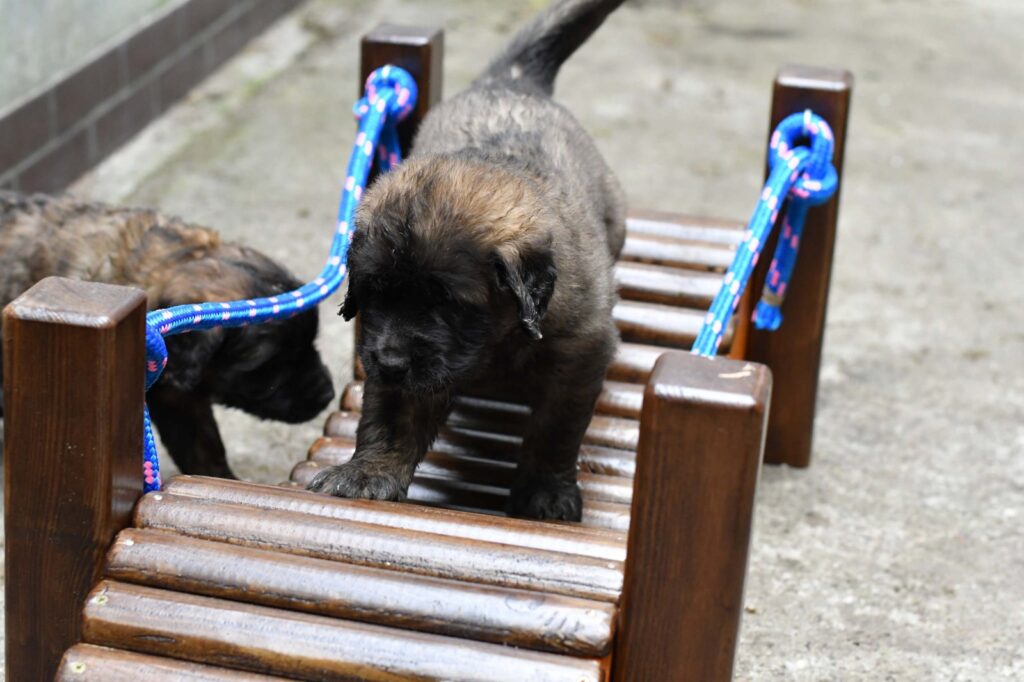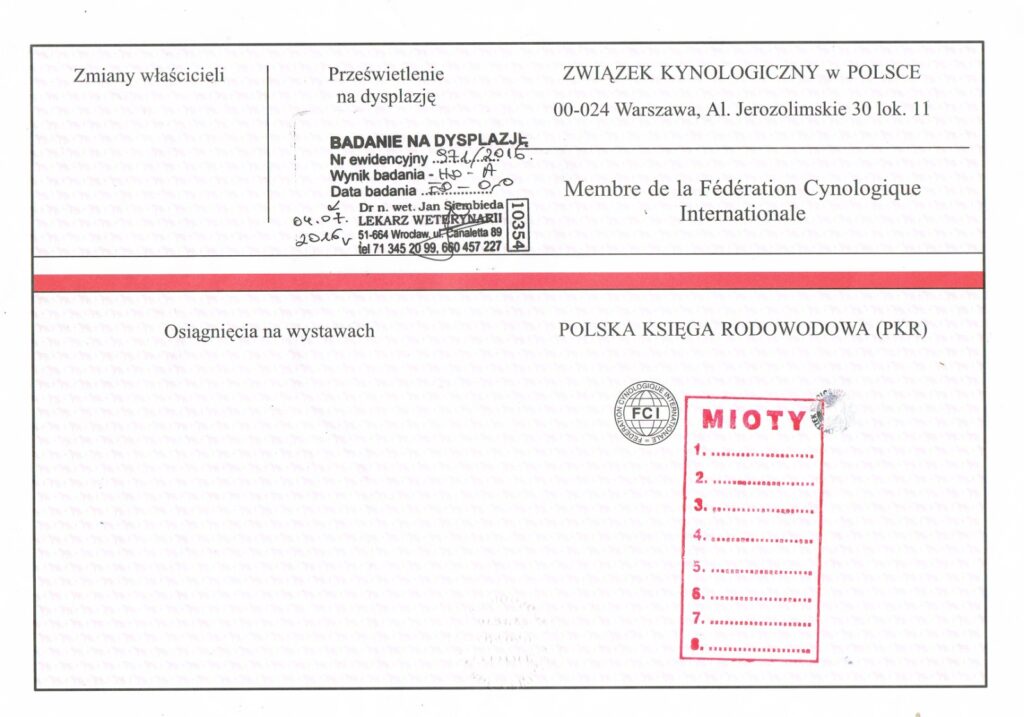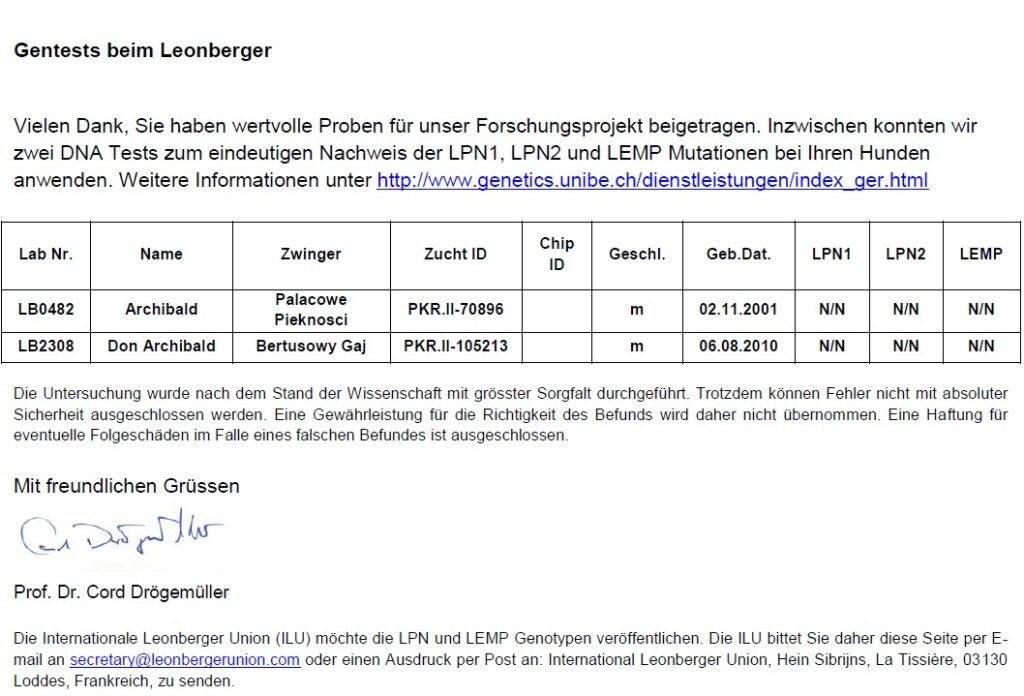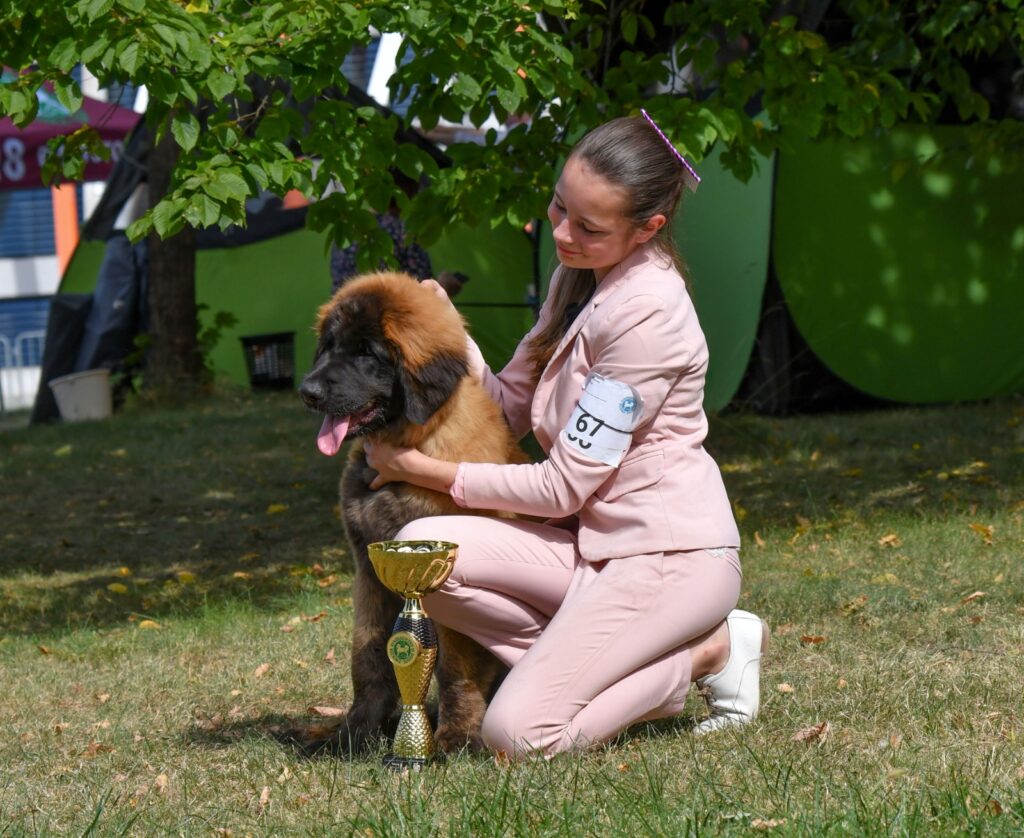HOW TO CHOOSE THE KENNEL?
Asking the right questions is critical to make the right decision about choosing your puppy. We propose some questions below and these are a good starting point to help you get better informed about your breeder and the specific litter you are interested in. Breeders will appreciate your well-thought-out questions. When you are buying a puppy the only mistake is not asking any questions.
There are quite many Leonberger breeders in Poland, and in the announcements about puppies, breeders provide various magic letters referring to the research and titles of the dogs. So let’s try to explain it all. When choosing a kennel, it is worth visiting or at least talking to few breeders. For many breeders selling a puppy means the buyer will become part of their family or friends. Sometimes the relationship between breeder and buyer becomes the friendship for many years. There is a saying that you can’t choose family, but this family you can choose and it is better to do it consciously. Support from the breeder is very important through the dog’s life.
Leonbergers, like most molois breeds, can be problematic during the growth period, and as adults they can struggle with health problems, e.g. with dysplasia of the joints, eye or heart diseases. The tested and healthy parents will not guarantee us a 100% healthy puppy (nothing and no one can guarantee it), but it increases the chance that the puppy will be healthy like his/her parents. Mentally well-balanced parents of puppies, especially the mother, give a better chance for balanced offspring. If the mother shows fear or aggression, the offspring may not only inherit this trait, but also simply learn that behaviour. Where and how little Leonbergers grow up has high impact on them. Puppies should be in frequent contact with the breeder and have access to the house to learn as many sounds of everyday life as possible. It’s worth asking the breeder how puppies are socialized. The little ones should be provided with many stimulus; it’s worth looking around to see if they have a variety of toys. Puppy playgrounds are fashionable now – but they are not necessary. The playground will not provide itself socialisation to the puppies, it must be done by the breeder and then the owner. The playground is only an addition, although a welcome attraction.

Some sample questions for the breeder:
How many dogs do you have (you have had)?
How often do you have puppies?
How many litters did you have in yours kennel?
How many litters did you have this year?
Do you breed other breeds?
What can you say about the longevity of dogs from your kennel?
How long do Leonbergers live?
What is the oldest Leonberger you have bred?
Let’s move on to the explanation of the health testing – it should be noted here that there are no required by polish kennel club medical tests for Leonbergers – this is the breeder’s goodwill and it speaks well of him.
Looking at the test results, we see the symbols HD, ED, OCD, LPN1, LPN2, LEMP, LPPN3, the meaning of which we will explain in a moment. Dysplasia, i.e. joint mismatch, with age such mismatch causes abrasion of elements and causes pain for the dog. This is the easiest way to describe it without going into details. Dysplasia can affect any joint, in dogs we most often test HD, i.e. hip dysplasia, and here the results can be: A – perfect hip joints, B – healthy, though not perfect joints, C – mild dysplasia, D – dysplasia, E – severe dysplasia. These are FCI (Federation Cynologique Internationale / International Cynological Federation) markings, in some countries there are other markings, but we will not discuss this topic in this article, we provide the markings used in Poland. The next joints we examine are the elbows, the abbreviation ED, we have
0 – healthy joints, 1 – 1st degree dysplasia, 2 – 2nd degree dysplasia and 3 – 3rd degree dysplasia. Breeding with a result other than 0 is not recommended, but 1 is also approved for breeding (not in all countries). Another test that we can come across is OCD – osteochondrosis, and it concerns the shoulder joints, but OCD can be in any joint. The result can be 0/0 or – / -, both markings mean that the dog is free (healthy). In Poland, the results of HD, ED and OCD are marked in the pedigree document of female / male.


Other tests typical of the Leonberger breed are LPN 1 and 2, LEMP and LPPN 3, these are genetic tests for neurological diseases, more fully described in the Health section. The symbol N/N means that the dog is free from the mutation, D/N means that he is the carrier of mutation but healthy, and D/D means that it is sick. In breeding we use dogs N/N and D/N, so one of the parents must be N/N if the other is D/N, we never mate D/N x D/N individuals. After both N/N parents, the whole litter has a N/N result, i.e. healthy, after D/N and N/N parents, some puppies may be carriers, but they will be healthy. The exception is LPN 2, here we only use N/N individuals for breeding. Unfortunately, there are many more mutations and it may happen that the dog is N/N and has symptoms of polyneuropathy or laryngeal paralysis. Research on other mutations is ongoing.
Other tests that you can come across are eye test, heart and thyroid tests. Eye and heart examination certificates are issued by an authorized veterinarian. You should ALWAYS see the results of the breeder’s tests, HD, ED, OCD are entered in the pedigree, while LPN 1 and 2, LEMP and LPPN 3 are issued by specialized laboratories in the form of a PDF file (from Laboklin, Universitat Bern Institut fur Genetik). If the breeder has done medical tests, she/he will be happy to show the results to the buyer; after all, healthy dogs are the pride of the kennel. The health results of bitches and stud dogs on our website have been verified by the club, these dogs definitely have a health result. In the pedigree document of the dog there is also a confirmation issued by the Polish Kennel Club regarding the dog’s entitlement to be a stud dog and the bitch’s entitlement to be
a breeding bitch.
Shows:
Exhibitions and titles are a very complex topic. You can go to a show, where a breed specialist is judging, have 15 dogs in a competition, get an excellent grade, have a 4th place and sometimes it will be worth more than a country championship, where 4 dogs were showed in the whole breed, and the judge is „allrounder” which means he can judge many breeds from different groups. There are dogs with many titles, won practically without competition, at the same time judged at large shows by breed specialists, they often do not even get excellent marks. There are also untitled dogs – rarely on the show or very badly shown, and they can be just as beautiful as these titled dogs. The titles do not inherit, they are an addition to the dog, but not an absolute indicator of its quality. They should not be the basis for a decision to buy a puppy from these parents, “because they have so many titles”. Each country has its own rules for awarding the title of champion.
Usually, the abbreviation of the title is given and the abbreviation of the country, e.g. CH PL means Polish Champion or the title of Junior Champion (and here the country, e.g. Pl, Cz, Lat, etc.) or Jr.Ch – these are the titles obtained in the junior class. Champion – this is a title obtained by an adult dog at the age of 18 months. Int. Ch-C.I.B. – Interchampion is a dog that got CACIB in 3 countries at 4 shows from different judges. Club Winner title – is the winner of the club show, usually the year is given (as club shows are usually organized once a year). The most important exhibition for Leonbergers is the German Club Show in Leonberg, every year on the last weekend of September. World / European Winner – Junior World / European Winner titles – usually very difficult to win in large, international stakes in the breed. However, there are no vice-winner titles, multichampion, etc. – these are the titles written by breeders, but formally such titles do not exist.
It is important to pay attention that health result should always be prioritized over the titles.

After decoding the titles and health results, it is necessary to look at equally important details, i.e. how the breeding is managed. How many litters was delivered by bitches living in the kennel? Leonbergers mature late, they age quickly, if the breeder cares about the welfare of his animals, 3-4 litters in a bitch’s lifetime are the maximum.
Are the litters still with the same stud dogs? Breeding should be based on the development of the breed, continuous mating with the same dogs narrows the genetic pool, which is already very narrow in Leonbergers. Does the breeder use stud dog somewhere else or still use dogs that live nearby or in their own backyard? Of course, there is nothing wrong with using your own dog for breeding, but not all the time and not always with the same female dogs.
Does veterans live in the kennel? Sometimes they are not there, because they have recently left over the Rainbow Bridge or the kennel has only been around for a short time, but in older kennels with more dogs, the lack of veterans/non-breeding dogs should be worrying.
What does the breeder feed the puppies with? Is it the cheapest, Premium or Super premium dry food, maybe she/he cooks or gives raw natural food? All of these answers will be OK except for the cheapest food.
Does the kennel publish the results of their dogs health tests? Does breeder submit litters to the international Leonberger database? (http://leonberger-database.com). This database is very important in many ways. This is not the subject of this article, but it is very important for the entire breed that data is complete as possible, because thanks to this database we can view many generations back, as well as the health tests results of ancestor’s. If the breeder does not do this, she/he does not really care about the breed and its well-being.
At what age does the breeder allow puppy to travel to new home? Leonberger matures later, develops more slowly and puppies should not leave the kennel before the age of 9 weeks old.
We wish everyone good choices and a happy life for many years with a wonderful new family member. And don’t forget about his breeder, because he always wants to be in touch with his “children”.
